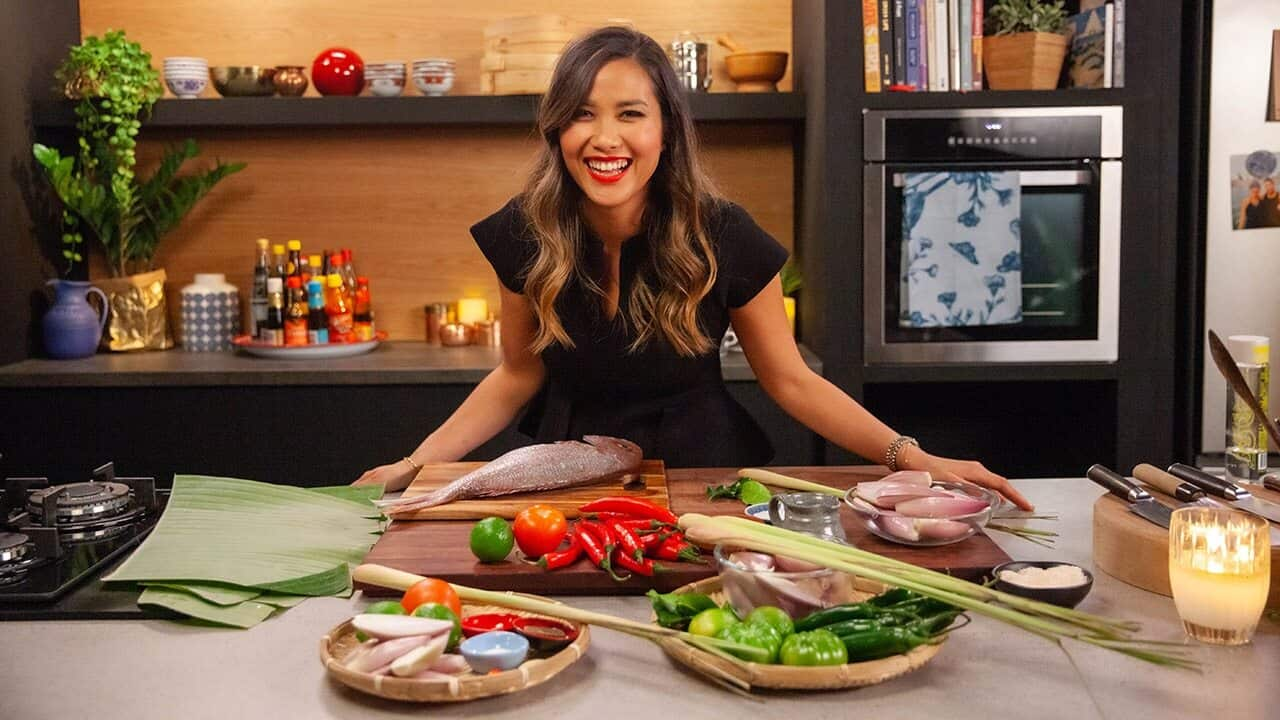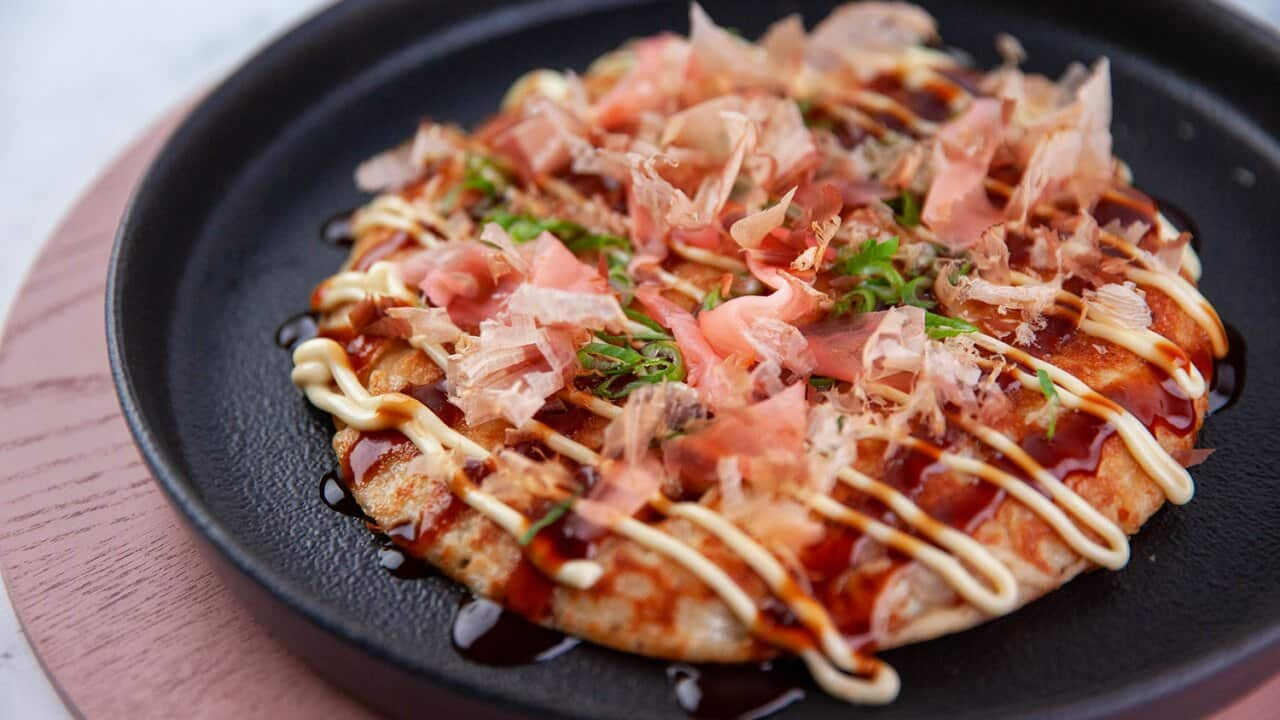--- Diana Chan is bringing the wonder of Asian cuisine to your homes in the second series of , Thursdays at 8pm on SBS Food and streaming on SBS On Demand. ---
You may associate sausages with the German wurst, the Australian sausage sizzle or the American hotdog, but did you know there are so many more varieties? Countries in Asia have their own version of the humble sausage and we've brought you six of Asia's tastiest sausages.
Sai Oua
Sujet Saenkham, the chef and owner of award-winning restaurant in Sydney, says "People are able to make a living from making and selling sai oua".
A charcoal-grilled pork sausage from northern Thailand and Laos, sai oua comes in two main variations, spicy and non-spicy. The Laos one is generally free of chilli, but if you want to turn up the heat, you can ask for dried or fresh chilli to eat alongside the sai oua. If locals hanker after a morning or afternoon snack, not a meal, chances are they'll choose sai oua.
To make the filling, a coarse curry paste with lemongrass and makrut lime is used to marinate a minced combination of lean and fatty cuts of pork. The sausage uses a casing of pork intestine, so before manufacturing of artificial casings in Thailand, Saenkham explains that sai oua was like a delicacy. "They'd only make it if they have to slaughter the pig, and they only slaughter the animal if they have family gatherings, religious gatherings, weddings, or becoming a monk, for example."
Now, sai oua is found in markets all over northern Thailand. Saenkham says, "There is someone dedicated to just make and sell sai oua," even in the smallest ones. While they look similar from market to market, the taste differs depending on who makes it.

Northern Thai sausage (Sai oua) Source: Andrew Dorn
Lap cheong
The sweet and chewy lap cheong you may be familiar with, which is incorporated into the yum cha dish lo mai gai [lotus leaf wrapped glutinous rice] and special fried rice, hails from the Guangdong province of China. According to the , this Chinese sausage dates back an estimated 2,000 years. To make lap cheong, lean pork shoulder meat and pork back fat is mixed with salt, sugar, white wine, and sodium nitrite, stuffed into an intestine casing. It's then sun dried for 10 to 14 days or oven dried for one to two days, writes author Y.H. Hui in the .
Cha lua or gio lua
You'll recognise Vietnamese silky sausage, known as cha lua or gio lua, in its thinly sliced, faint white-pink form, used as a cold cut in banh mi, a breakfast baguette originating from Saigon. At Tet, the Vietnamese Lunar New Year, cha lua is also eaten, although the baguette is swapped for sticky rice cakes. While its bouncy, smooth texture appears to suggest it contains fat as an ingredient, you may be surprised to learn that cha lua consists of two ingredients: pounded lean pork loin and fish sauce. It's final flavour comes from being boiled for an hour while wrapped in banana leaves.
WATCH ASIA UNPLATED WITH DIANA CHAN

Asia Unplated with Diana Chan S2 | Episode guide
Choris
In Goa, India, choris, or chouriços de Goa, typically looks like a string of small sausages, each around the size of a thumb. Thought to be a byproduct of Indo-Portuguese cuisine, is a deep red sausage made from pork marinated in toddy vinegar (fermented coconut sap), recheado masala (a blend of spices that has a red colour), ginger, garlic, and salt.
Families make choris at home. They stuff the sausage then hang them on a line in the sun to or smoke them over a fire.
The vinegar and recheado masala introduces a zing to the choris, though the first flavour to hit you when you bite into it is spiciness. Goans commonly pair it with pão, a bread roll, to have as a , but they also add it to rice dishes like biryani to enhance its flavour.
Gulai tambusu or gulai iso
If you blink, you're likely to miss gulai tambusu, a sausage hailing from Bukittinggi in West Sumatra, Indonesia. Here, the Minang people sell nasi kapau, a build-your-own rice based meal. Vendors display around 20 different dishes, most of them variations of gulai, a curry-like dish. Among them is gulai tambusu, a turmeric-yellow gulai where the star is sausage made out of egg and mashed tofu.
Beaten egg, tofu, shallots, garlic, candlenut and red chilies go into an intestine casing to create a very soft and thick sausage that is a perfect side dish for fluffy white rice.
WEST SUMATRAN STORIES

The West Sumatran nasi kapau that saved a struggling restaurant
Sundae
Jihee Kim, the director of the Korean Cultural Centre Australia, says that prior to the 1970s, sundae was rare and regarded as a delicacy. It wasn't until the pork industry skyrocketed in the seventies that it proliferated in markets and became "a symbol of ordinary people's food". Although sundae is often associated with the sausage that's filled with pork blood and glass noodles, other fillings can include minced meat, vegetables, barley, buckwheat, chives, or glutinous rice. Pig intestine is usually the casing of choice, however Kim says squid may be used instead to make a squid sundae.
Although sundae is often associated with the sausage that's filled with pork blood and glass noodles, other fillings can include minced meat, vegetables, barley, buckwheat, chives, or glutinous rice. Pig intestine is usually the casing of choice, however Kim says squid may be used instead to make a squid sundae.

Dip the sliced sundae and offal in salt or doenjang. Source: Audrey Bourget
Locals often eat sundae with strongly flavoured condiments. It is "dipped in salt mixed with red chilli powder in Seoul, but it is dipped in salt mixed with salted shrimp or pepper in Gangwon and Gyeongbuk region," says Kim. "In Jeolla province, people dip sundae in chojang (red chilli pepper sauce), and in Gyeongnam province, they dip it in ssamjang (soybean paste)."








